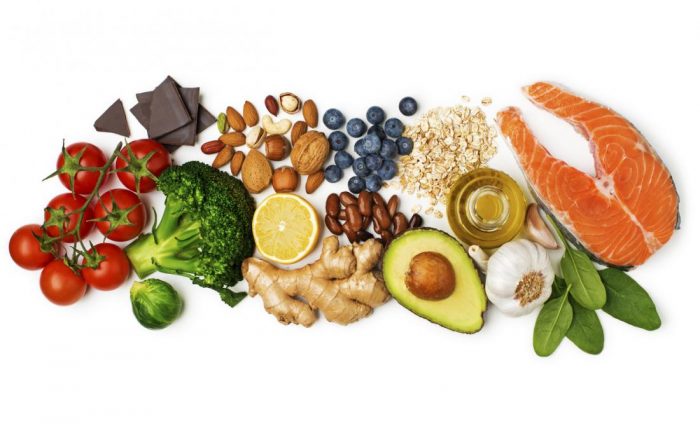How to Eat Smart with Ease

Is your body toxic? Does your stomach hurt after eating? Does it blow up like a balloon? Digestive issues are at an all time high for people of all ages in the U.S. Throughout my lifetime, I never had digestive issues – UNTIL I landed in the hospital with injuries that required 3 surgeries and a 2 1/2 week hospital & sub-acute care facility stay. All of the medications that I was on throughout the surgery process, wiped out the healthy microbiome in my gut, creating stomach issues that I had never experienced before.
My Game Plan to heal my gut
I put myself into the hands of a reputable Functional Medicine doctor for the most up to date targeted testing, and learned quickly what I needed to do to heal my gut and move forward with ease and grace. I had already been a healthy eater, but I needed to step up my game even more. For over 2 years now, my morning breakfast, Monday through Friday, has consisted of a nutrient dense Smart Choice Smoothie blended in my Vitamix. This was the beginning to my new and improved level of vitality!
Prebiotics and Probiotics are a dietary staple for me, along with a variety of additional trustworthy supplements including Turmeric, Co-Q10, B-12, and Magnesium Spray. I eat as clean as possible and I hardly ever “cheat”. I never eat wheat and I do not drink domestic wines. I drink filtered water that filters out fluoride and I cook with reverse osmosis water. I enjoy eating organic produce from a local organic farmer and I prepare most of my meals at home with the most pure and trustworthy ingredients. Healthy eating is fun and easier than it seems!
So How Do You Feel?
If you feel sluggish, have noticed changes in your digestion, have unwanted weight gain, do not poop at least once a day, have issues sleeping through the night, are often dehydrated, or feel tired after eating a meal – then you are definitely a candidate for making changes in your daily eating habits. My first recommendation to all, is to do the elimination diet (it’s free!), and/or get tested with blood work for food sensitivities. My next recommendation is to begin making smart eating choices. Let’s learn how to eat smart with ease and build healthy eating habits.

Smart Choices for Eating Clean
- Enjoy an abundance of fruits and vegetables
- Avoid foods grown with pesticides.
- Avoid livestock foods grown with hormones or antibiotics
- Consume healthy fats: olives, olive oil, nuts & seeds, avocados, coconut
- Limit dairy consumption / avoid altogether to calm inflammation
- Choose healthy protein sources: beans, legumes, nuts, & seeds
- Select cold water fish that is sustainable and low in mercury
- Eat organic or sprouted whole grains in moderation (if you are not sensitive)
- Limit sweetners (choose raw honey, maple syrup, organic stevia)
Follow this list and keep in mind that food truly is medicine. Everything you eat has complex biomechanical messages for your body. Your body was designed to heal itself, providing you nourish it with healthy choices. This means avoiding boxed & bagged items on the inner store shelves, staying in the outer isles where the fresh produce resides, and doing as much cooking at home as possible. Making smart eating choices can change your life and save your life. Keep it simple and eat food that is recognizable and comes from a living source.
Important Reasons Why You Must Make Changes Now
- A small number of multinational corporations control our entire food system
- The U.S. has the highest rate of obesity in human history.
- One in three people born in the U.S. in the year 2000 will develop diabetes.
- The current generation will be the first ever to live shorter lives than their parents.
- Diversity in today’s food choices has diminished greatly.
- 70% of processed foods are genetically modified.
- The broad exposure to antibiotics has created superbug bacteria that are resistant to antibiotic treatments.
- Antibiotics in our food supply destroy intestinal bacteria (our healthy microbiome) that protects us from allergy and disease.
- We have become victim to the greatest experiment on industrialized food and toxic exposure that has ever been witnessed in human history.
Highest Pesticide Content (listed worst to best)
- Apples
- Peaches
- Nectarines
- Strawberries
- Grapes
- Celery
- Spinach
- Sweet bell peppers
- Cucumbers
- Cherry tomatoes
- Snap peas
- Potatoes
- Hot peppers
- Kale/collard greens
Lowest Pesticide Content (listed best to worst)
- Avocados
- Sweet corn
- Pineapples
- Cabbage
- Sweet peas (frozen)
- Onions
- Asparagus
- Mangoes
- Papayas
- Kiwifruits
- Eggplant
- Grapefruits
- Cantaloupes
- Cauliflower
- Sweet potatoes
Food You Can Eat and Will Love
- Cruciferous Vegetables: cabbage, broccoli, cauliflower, brussel sprouts, kale, collard green, turnips, arugula, and radishes. These choices support detoxification. with phytochemicals that are known to lower rates of colon, prostate, lung, and breast cancer.
- All colors of the rainbow: reds, purples, blues, greens, oranges, and dark browns / berries, grapes (additive free red wine), purple cabbage, kale, oranges, sweet potatoes, turmeric, chocolate, coffee, and tea. Flavanoids are excellent for promoting antioxidant, anti-inflammatory, anti-allergic, antiviral, and anticancer properties to plant foods.
- Beans & Lentils: High in protein, high in fiber, lowers cholesterol, decreases blood sugar, is anti-inflammatory, high in folic acid, B6, and magnesium.
- Fermented Foods: provide the healthy intestinal bacteria that makes up our gut microbiome. Yogurt, kefir, sauerkraut, kimchee, miso, tempeh, sourdough bread, vinegar, kombucha, and brewer’s yeast (nutritional yeast).
- Healthy Fat is essential to good health. It slows digestion and keep you full longer. Olive oil, avocados, nuts, flaxseeds, hemp seeds, and fatty fish (sardines, wild pacific salmon) are high in Omega-3 fatty acids. Once again, we have anti-inflammatory properties within the long chain omega-3’s, EPA and DHA (good for heart disease, arthritis, and strong hair & nails). Ground flaxseeds and hempseeds for best absorption.
- Coconut milk and coconut oil improves insulin sensitivity and helps maintain blood sugar stability. Coconut oil is also beneficial in treating Alzheimer’s disease.
- Whole wheat, faro, rye, spelt, millet, oats, rice. and quinoa are high in fiber, B vitamins, and minerals. Read labels and do not buy any whole grains that contain “white flour” or “enriched white flour”.
- Fish provides a rich source of omega-3’s and helps to prevent heart disease. Salmon, sardines, anchovies, and mackerel are the most fatty fish. Note that larger fish store toxic amounts of mercury in their bodies from eating smaller fish who ate smaller fish who ate plants with naturally occurring mercury. If the fish in its whole form is larger than your plate, it will most likely contain large amounts of mercury. Tuna and swordfish are the highest in mercury. Avoid farmed seafood because they are given antibiotics. Atlantic farmed salmon spreads disease to native salmon populations and is artificially colored pink so that it looks like wild salmon.
- Green tea supports weight loss, prevents all types of cancer, and provides L-theanine (reduces anxiety and supports sleep & mental clarity). Black tea and green tea slow cognitive decline and lowers C-reactive protein (reflects systemic inflammation).
- Coffee is the number one source of anti-oxidants in the U.S. diet and reduces the risk of: type 2 diabetes, lowers risk of stroke, parkinson’s disease, and dementia, and decreases the risk of liver cancer and liver cirrhosis. Limit coffee to one to two cups per day.
- Red Wine if it is dry farmed (no forced irrigation or added chemicals & dyes) is rich in flavonoids and contains reservation – an antioxidant that is known to prevent atherosclerosis and cancer.
- Chocolate is extremely rich in flavonoids and contains a significant amount magnesium and arginine. Health benefits include lowered blood pressure, and the prevention of blood clots and heart attacks. The most beneficial chocolate contains a higher percentage of cacao. Raw cacao powder tastes delicious by itself in hot water, sweetened with a touch of organic stevia.
- Spices that are anti-inflammatory include: paprika, ginger, oregano, rosemary, cinnamon, fennel, cardamom, and cayenne. Use ginger for arthritis, cinnamon for blood sugar, and fennel & cardamom for digestion.
- Natural sweeteners include raw honey, maple syrup, molasses, and organic stevia. Stevia improves insulin resistance and reduces diabetic risk.
If your tastebuds are used to eating processed foods, know that taste is changeable. Once you shift your mindset through determination to feel the gift of vitality that is your birthright, you will be amazed at how incredible the real food above tastes, and on the contrary, how awful the fake processed food tastes. Simple food is delicious, very easy to make, and fun to eat. The bonus is you feeling your full energy from the time you wake up in the morning until the time you go to sleep at night.
Essential Activity:
Inventory the food in your home. Read the ingredients. Give away or throw away the food that does not serve you. Make a wish list of items you need to buy for your pantry and buy them gradually or at a pace that you are comfortable with. Use online resources for healthy recipes that promote the healthy foods above. Re-design your morning routine by drinking a Smart Choice Smoothie.






Cool! Thank you so much for sharing this. I find it very helpful and informative.